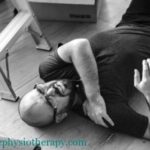Shin Splint
The pain at the front of the lower leg is often referred to as Shin splint. This pain at the front of shin bone can appear due to a number of causes. More often it can be categorized into overuse syndrome, resulting from rigorous training.
Symptoms of Shin Splint?
- Gradual onset of pain over the shin bone.
- Pain before and after a rigorous training
- Pain eases during the training phase.
- Shinbone pain is the first worst thing noticed in the morning.
- In chronic cases, swelling or lump can be felt along the inside of the bone. This is mainly due to the new bone formed as a result of repeated trauma.
Diagnosis of Shin Splint
The Physiotherapist needs to rule out other conditions which can mimic similar symptoms, like :
- Tibia stress fracture,
- Chronic compartment syndrome or
- Popliteal artery entrapment.
What are shin splints?
The muscles attached to the shin bone produce a pulling force over the Periosteum (outer covering of the bone). In cases of overuse or overtraining, this pulling force on Periosteum is excessive. This excessive pull on the Periosteum produces the inflammatory response.
It is more of medial tibial traction periostitis or medial tibial stress syndrome. Shin splint is basically a common name used by athletes to describe the anterior shin bone pain.
Causes of Shin Splint?
Athletes involved in activities like running, jumping, or sprinting are more likely to develop the syndrome. The factors which can increase the likelihood of shin bone pain are-
Increase the intensity of training too quickly– this is the most common cause of shin splints. Doing too much too quickly increases the risk of injury.
Inappropriate footwear- shoes with inadequate support or shoes that alter the normal biomechanics of the foot can result in excessive strain on the shin bone during the training phase.
Overpronated foot (flattened medial arch of the foot in standing) – this results in inward rotation of shin bone putting excessive strain to the bone while training.
Oversupinated foot (high arch foot) – altered biomechanics makes the foot susceptible to injuries and put undue stress on structures supporting the foot.
Achilles tendon tightness – tightness in structures posterior to the foot will need anterior muscles to work harder to clear the foot of the ground causing excessive pull on the Periosteum of the anterior shin bone.
Treatment
- Initial treatment of most of the sports injury comprises PRICE (protection, rest, ice, compression, and elevation) to reduce the pain and inflammation.
- Physiotherapist needs to identify and correct the training errors and biomechanical faults which make the foot vulnerable to injuries.
- Therapeutic massage/ soft tissue release techniques.
- Restoration of adequate muscle length and strength.
- Proper footwear.
If you experience pain at the front of your lower leg, time and again, it can be shin splint. Let us identify the actual cause which is
hindering you achieve the best of your capabilities in sporting activity.
We at Pain Free Physiotherapy Clinic are highly efficient in identifying biomechanical faults, muscular, and other structural faults that is causing your problem. Feel free to contact us.











